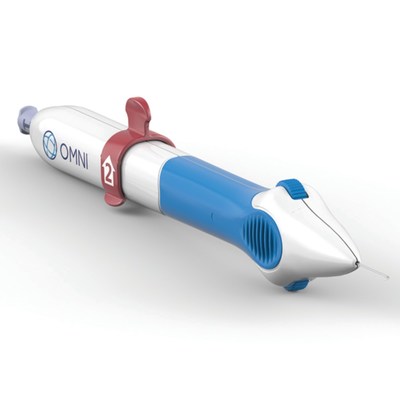

MENLO PARK, Calif., Sept. 18, 2019 /PRNewswire/ -- Sight Sciences announced clinical results from the first study of the OMNI® Surgical System in glaucoma patients were presented at the European Society of Cataract and Refractive Surgery (ESCRS). Findings from the pilot study suggest the OMNI® Surgical System, which is dually indicated in Europe for the sequential ab interno procedures of microcatheterization and transluminal viscodilation of Schlemm's Canal followed by transluminal trabeculotomy, may provide a favorable safety profile and significant long-term reductions in intraocular pressure (IOP) and IOP-lowering medications.

The pilot study included 24 eyes from 19 consecutive patients with mild to moderate primary open-angle glaucoma (POAG) who were treated with the OMNI® Surgical System. The study was conducted at the Ophthalmology Clinic Postgraduate Centre of Medical Education in Warsaw, Poland by Professor Grabska-Liberek, recent President of the Polish Ophthalmology Society.
Key findings include:
"We are pleased to announce the first presentation of long-term clinical data on the OMNI® Surgical System. With its unique capability to perform two sequential outflow procedures (canal viscodilation and trabeculotomy), OMNI® is the only device that can target all three sources of resistance in the conventional outflow pathway. The clinical findings of this first OMNI® study suggest a durability and consistency of IOP lowering and medication reduction when all three sources of outflow resistance are targeted sequentially," said Dr. Ingrid Kane, Vice President of Global Medical Affairs of Sight Sciences. "While larger, additional studies are needed and ongoing, these exciting first clinical results from one of the first surgeons to perform the two sequential OMNI® procedures follow just behind the long-term clinical data publications on OMNI®'s two predicate procedures: VISCO360®/viscodilation and TRAB®360/trabeculotomy. With several retrospective and prospective clinical studies ongoing and others being planned, we continue our commitment to building a very robust clinical data set on OMNI® that we expect will further reinforce the clinical benefits of targeting all three sources of resistance in the conventional outflow pathway."
Study Investigator Professor Grabska-Liberek added, "The OMNI® Surgical System is a promising new surgical glaucoma technology that I have been using to successfully intervene prior to considering more invasive incisional surgeries such as those using the subconjunctival space for filtration. OMNI® is the only technology that allows 360 degrees of canal viscodilation followed by 360 degrees of trabeculotomy all via an ab-interno approach. Using just a single corneal incision to target the conventional outflow pathway, the OMNI procedure should be intuitive to both cataract surgeons and glaucoma specialists."
About the OMNI® Surgical System
Indications for Use (Europe):
The OMNI® Surgical System is indicated for the catheterization and transluminal viscodilation of Schlemm's canal and the cutting of trabecular meshwork to reduce intraocular pressure in adult patients with open-angle glaucoma.
Indications for Use (United States):
The OMNI® Surgical System is a manually operated device for delivery of small amounts of viscoelastic fluid, for example Healon® or HealonGV® from Abbott Medical Optics (AMO), Amvisc® from Bausch & Lomb, or PROVISC® from Alcon, during ophthalmic surgery. It is also indicated to cut trabecular meshwork tissue during trabeculotomy procedures.
Warnings: The OMNI® Surgical System should not be used in cases where there is insufficient visualization of the anterior chamber. The following conditions may prohibit sufficient visualization required for safe and successful cannula and microcatheter placement: corneal edema, corneal haze, corneal opacity, or any other conditions that may inhibit surgeon view.
In the United States, the OMNI® Surgical System, VISCO360®, and TRAB®360 are tools, not treatments, and are indicated for use as specified above; they are not specifically cleared by the FDA to lower intraocular pressure in patients with open angle glaucoma.
For more information, please visit www.omnisurgical.com.
About Sight Sciences
Sight Sciences is a commercial-stage medical device company dedicated to the development of intelligently designed and engineered products that address the underlying physiology of ophthalmic diseases. The company's surgical glaucoma product portfolio features the OMNI® Surgical System. Its non-surgical dry eye product portfolio consists of TearCare® for ophthalmologists and optometrists. For more information, please visit sightsciences.com.

SOURCE Sight Sciences
